What really make it easy is the combination of the stand mixer to knead, and instant dry yeast. Instant dry yeast can be added directly to the dry ingredients, no need to activate it first in water. I have a big bag of Saf-Instant yeast that I ordered from Amazon, since I make bread so often. I store it in the fridge and it lasts for a really long time, like about a year.
I make this bread with my Kitchen Aid mixer using the dough hook, just as the original recipe recommends. Add the dry ingredients first, and then with the mixer running on slow speed, add the water and oil. The dough should stick to the bottom of the bowl while the mixer is running. If it’s too dry, add water. If it’s too wet and sticking to the sides of the bowl too, add more flour.
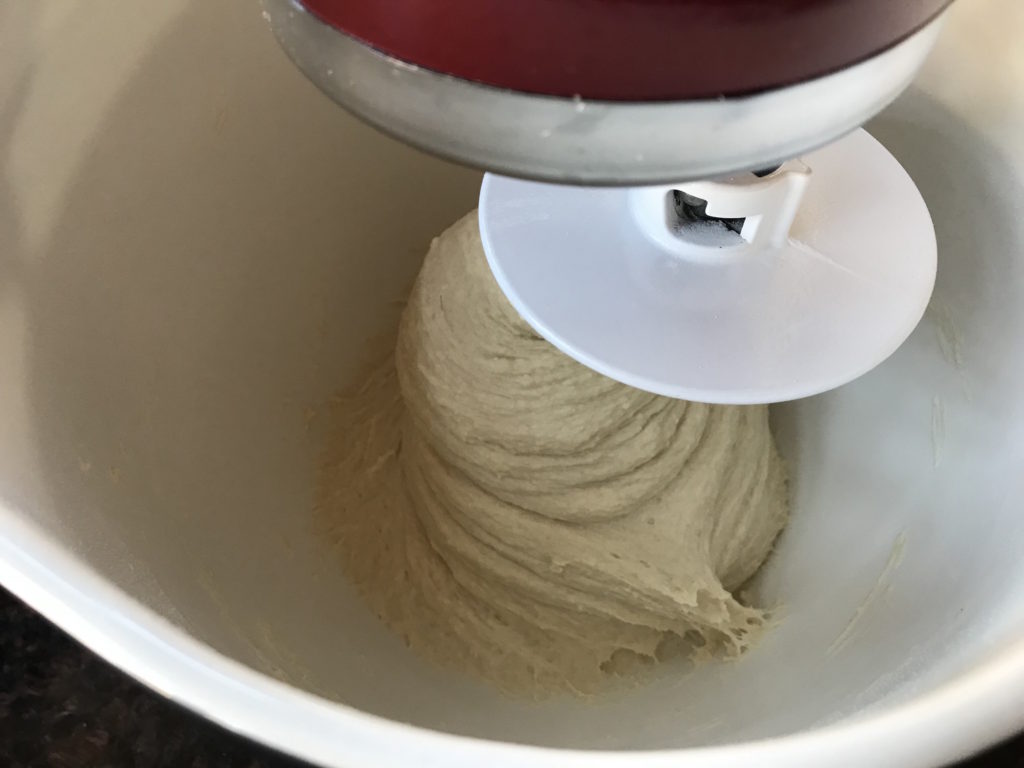
After 5-7 minutes of “kneading” the dough in the mixer, it’s time to let it rise. Dump the dough out onto a floured piece of parchment. You could use your kitchen counter without the parchment paper, but that’s going to make cleanup more difficult, and I bake my bread on parchment anyway, so it won’t be wasted.
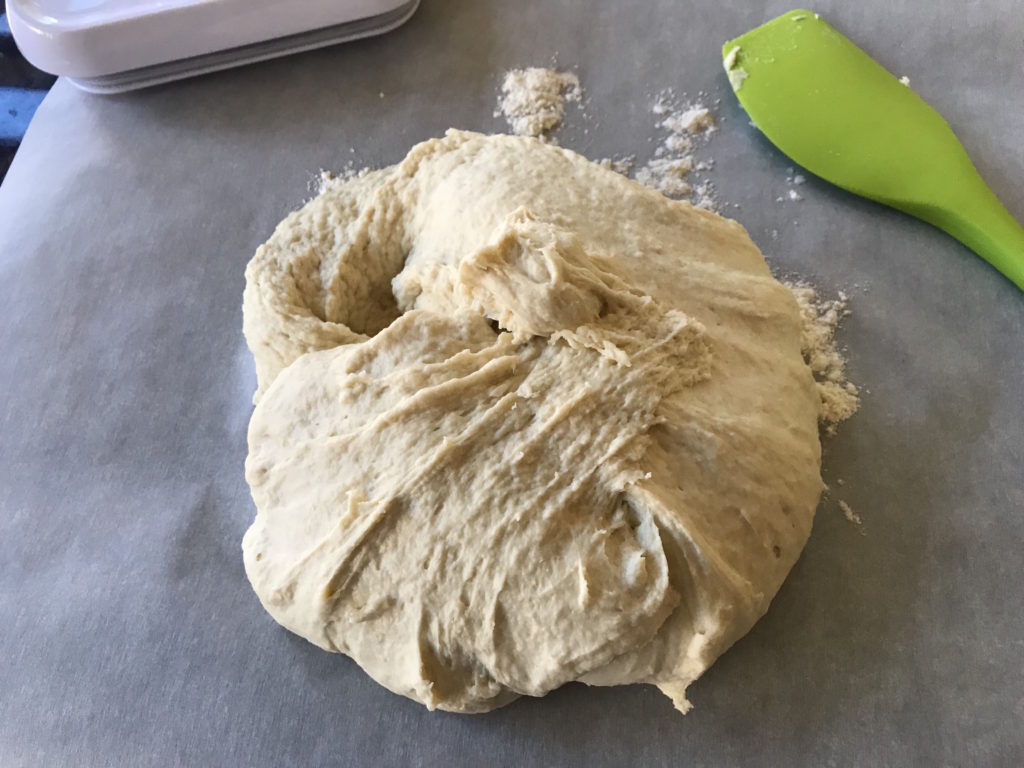
Now that the dough is out of the bowl, it’s time to grease the inside of the bowl with a little more olive oil. It’s OK if some of the dough was left behind in the bowl. Form the dough into a ball and plop back into the oiled bowl.
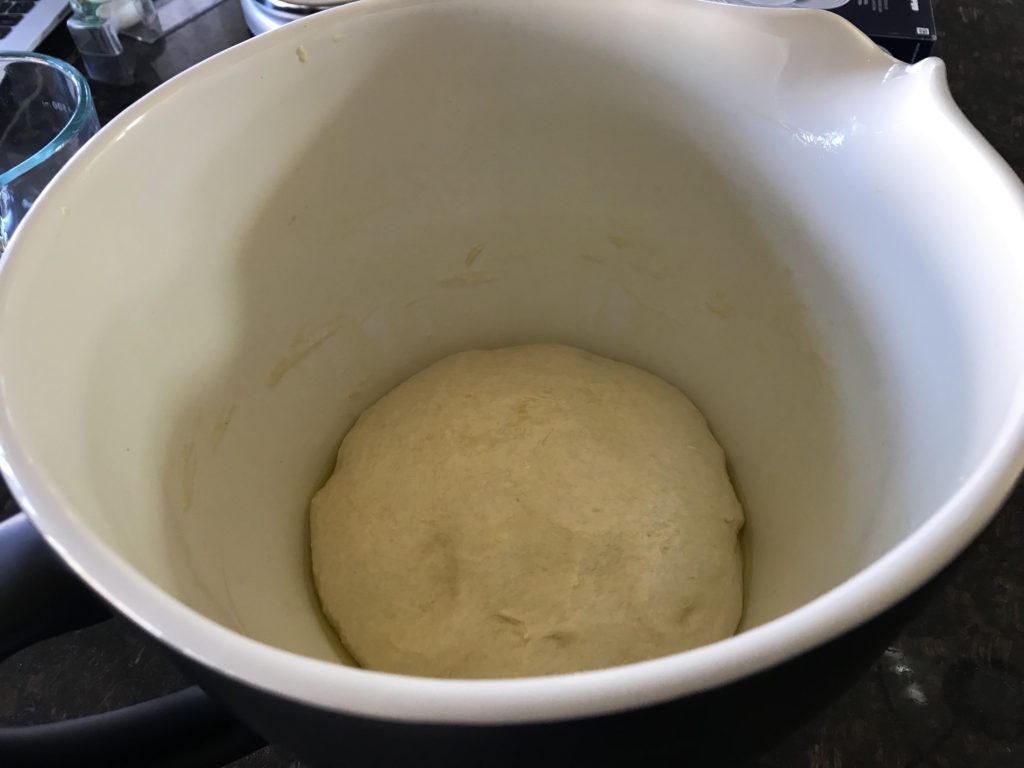
Flip it over a few times until it is lightly coated with oil, then cover the bowl with a dishcloth and let it rise for 1-2 hours. When the dough is risen, add a little more flour to that piece of parchment paper, and dump the dough back out. Use a spatula or knife to divide the risen dough into four pieces.
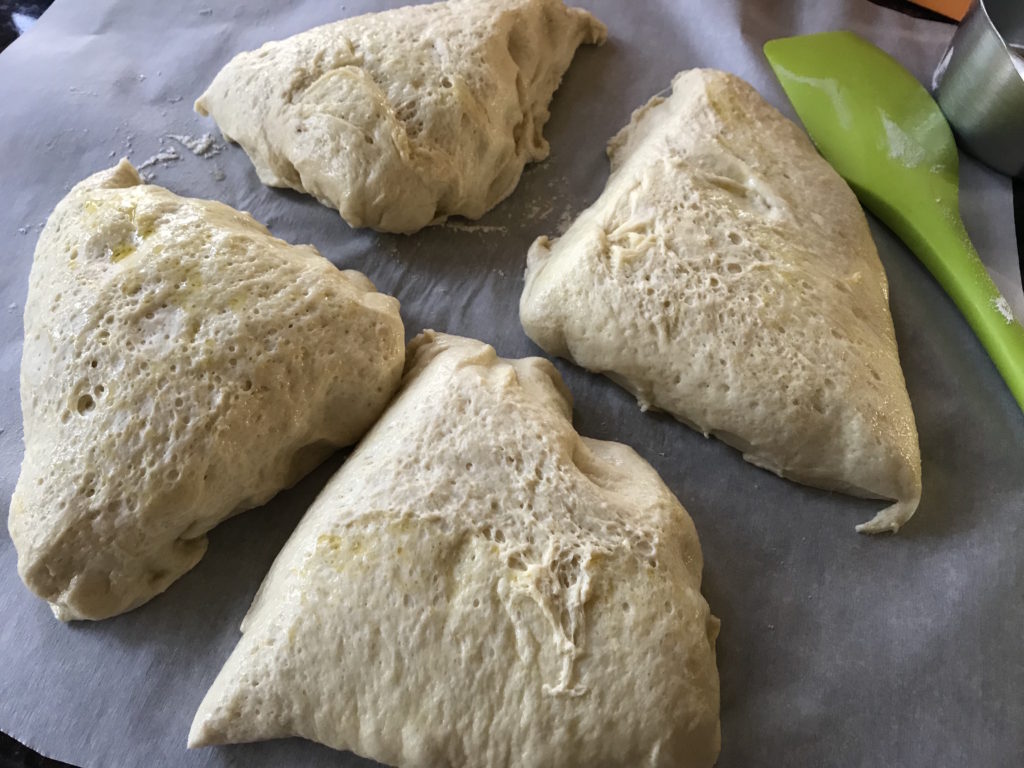
Form each piece into a small loaf while handling the dough as little as possible to preserve the air bubbles. I place 2 loaves on each parchment lined cookie sheet, then cover again with a thin cotton dishcloth.
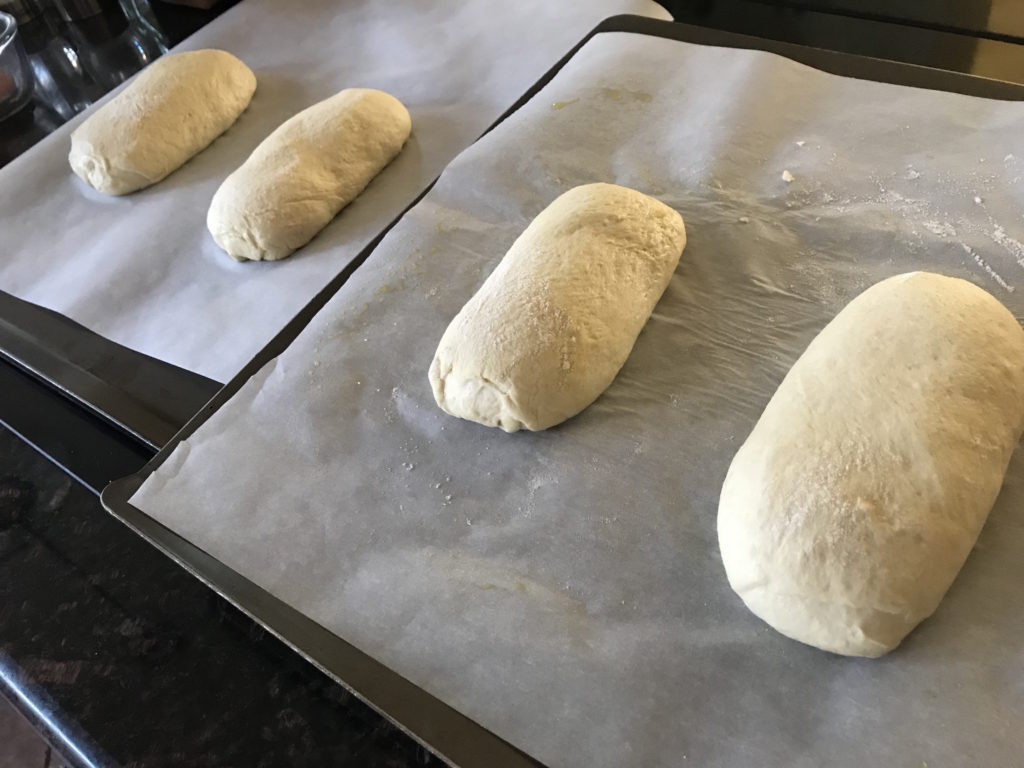
Let them rise a second time for 1-2 hours. Near the end of the time, preheat your oven to 425 degrees.
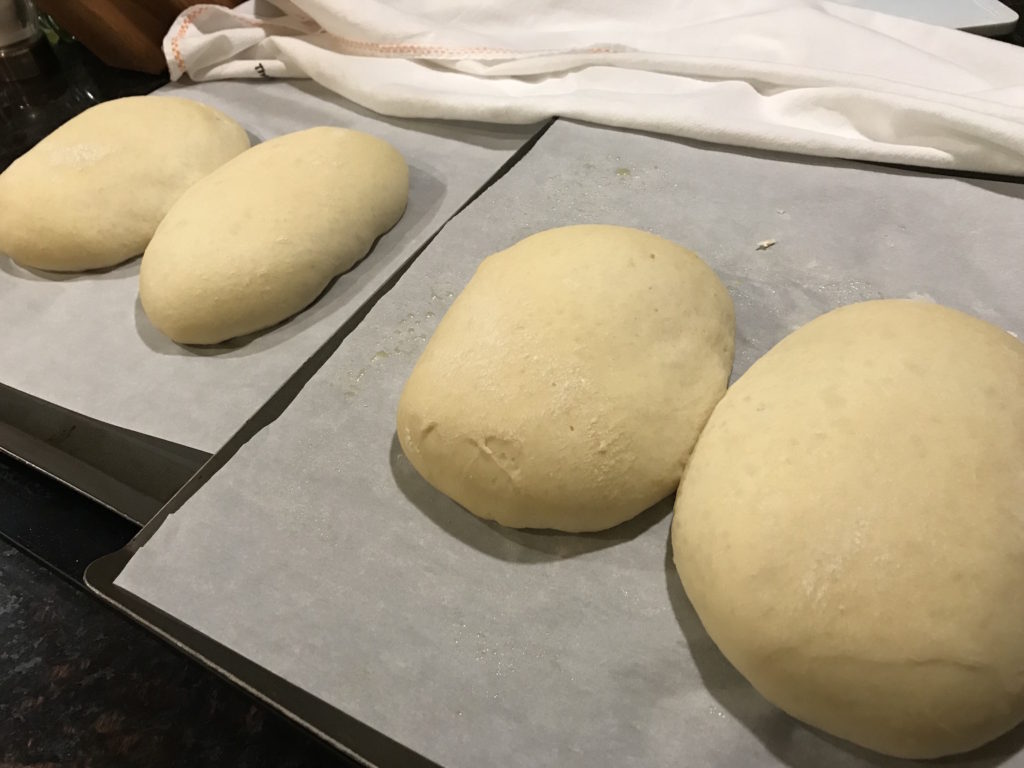
A little steam in the oven makes a crisper crust. I put a small casserole dish with a little water on the bottom rack of my convection oven. Bake for 25-28 minutes, or until the crust reaches a nice golden brown color.
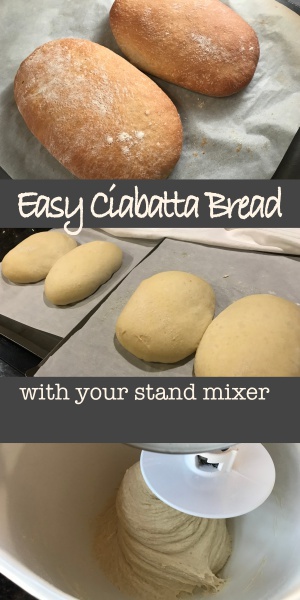
Although the bread is best on the first day, it will last stored on the counter for about a week. It works better as toast near the end. We like it served with either a light spread of butter, or dipped in seasoned olive oil.
Translated from British measurements to American measurements:
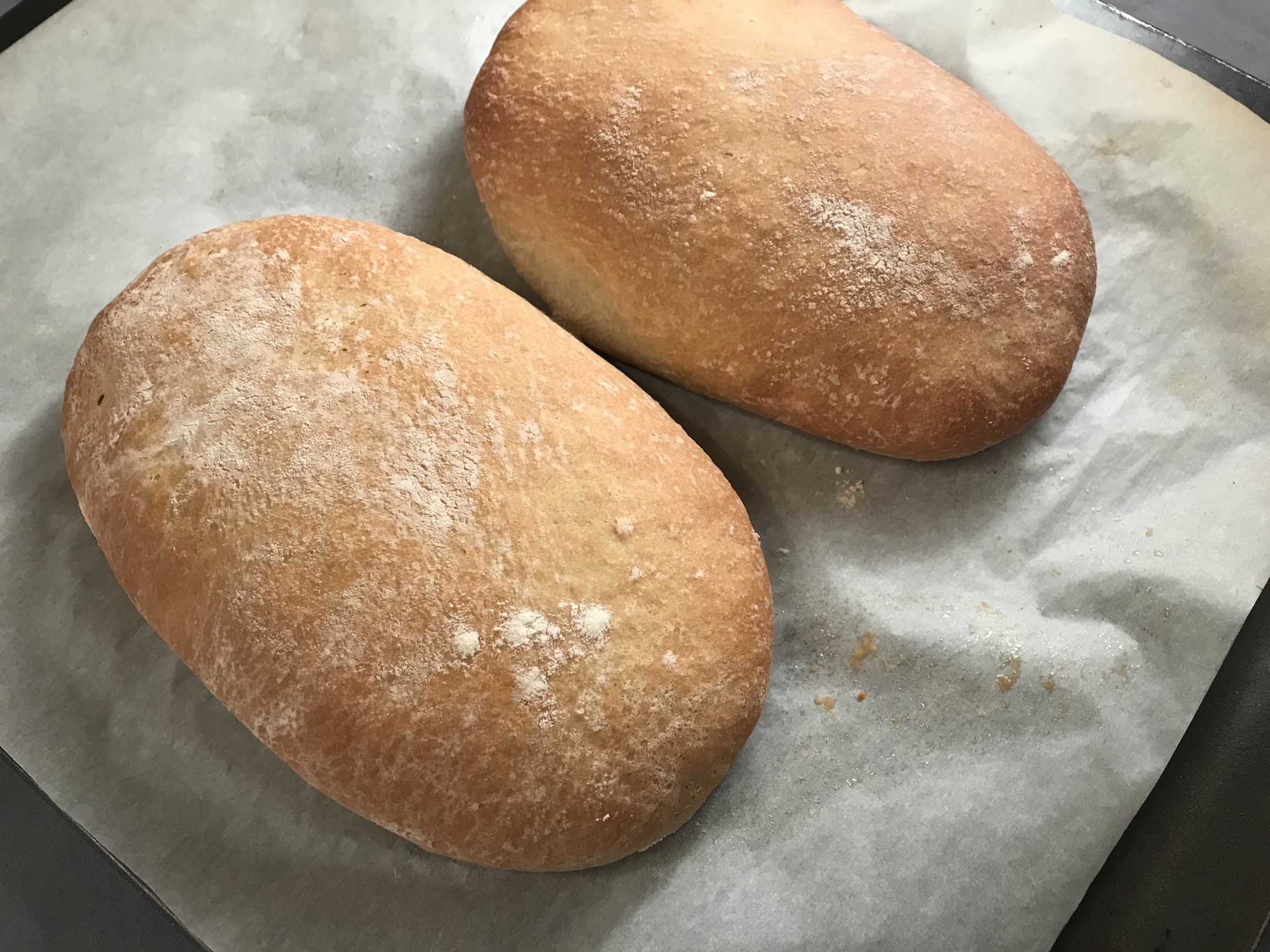
Ciabatta (Italian Bread)
Ingredients
- 500 g strong flour = 4 cups bread flour
- 10 g yeast = 3.2 teaspoons yeast
- 10 g salt = 2 teaspoons salt
- 400 mL water = 1.7 cups warm water (I used 1 ¾ cups)
- 40 mL olive oil = 2.7 tablespoons olive oil
Instructions
- Add flour, yeast and salt to the bowl of a stand mixer. Slowly add water and oil until a dough forms on the dough hook.
- Continue to knead the dough with the mixer for 5-7 more minutes. Dough will be wet and sticky.
- Remove dough from the mixing bowl and form it into a rough ball. Clean out the bowl and coat the inside with olive oil. Put the dough back into the bowl to rise, flipping it around a few times to coat it in olive oil. Cover the bowl with a lightweight cotton dishtowel.
- Let it rise for 1-2 hours, or until doubled in size, which will just about fill the mixing bowl.
- Cut the dough into 4 loaves, handling it as little as possible to keep the air in it. Place on parchment lined baking sheets, cover with plastic wrap or a lightweight dishtowel, and let rise again for about 1-2 hours more.
- Bake at 425 degrees for 25-28 minutes.
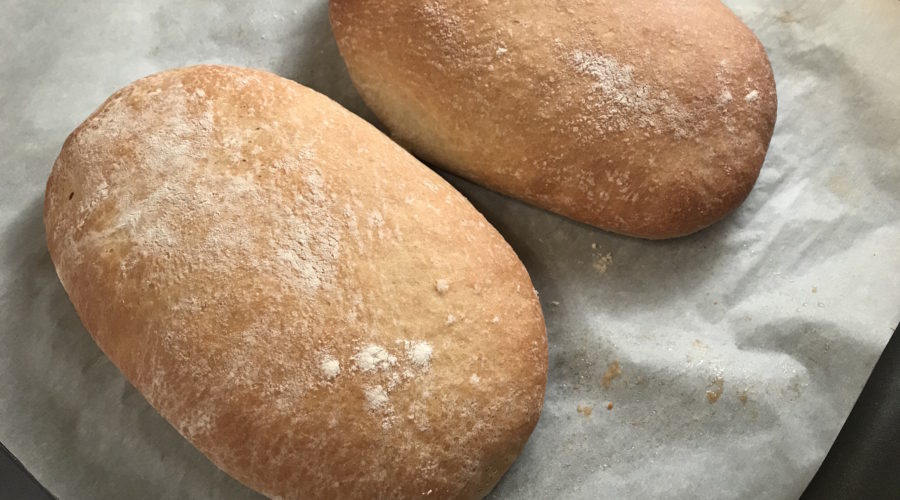
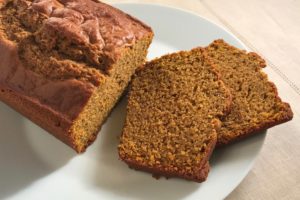
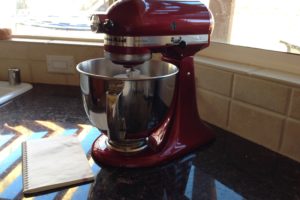
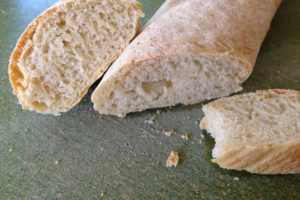
5 Comments
Leave your reply.